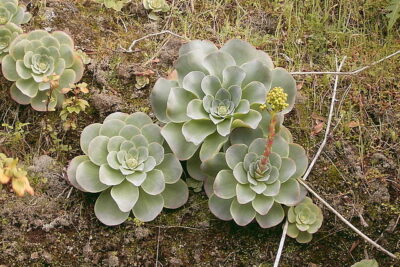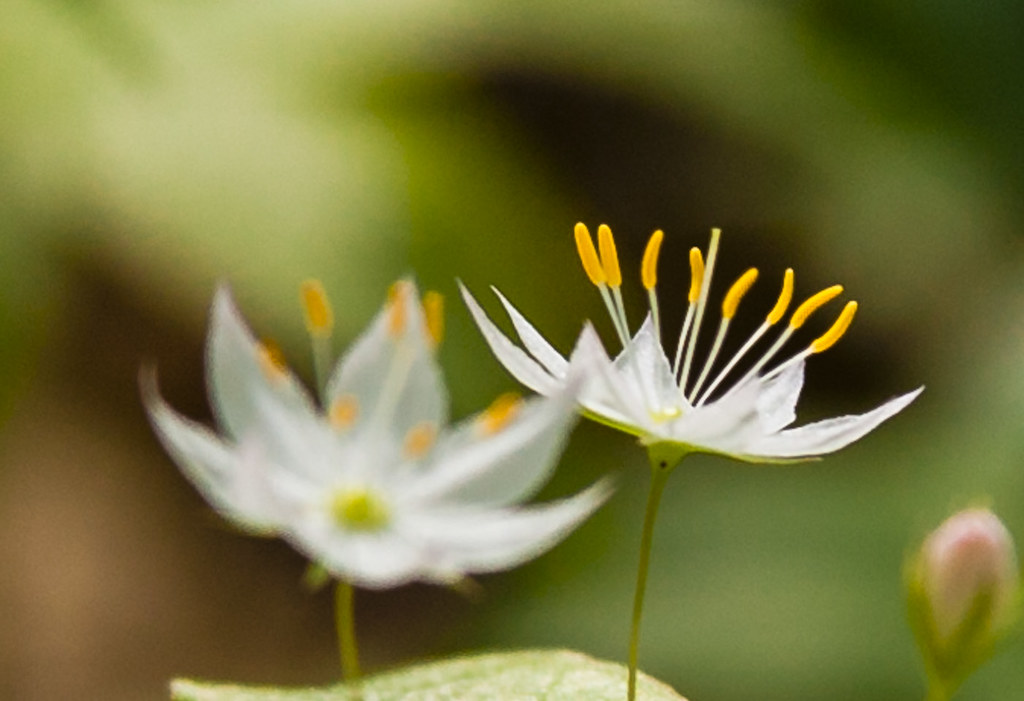
Can a Star Flower Succulent Survive and Thrive Indoors?

Star flower succulents, also known as Stapelia, are a unique and fascinating addition to any indoor garden. With their star-shaped flowers and succulent leaves, these plants have become increasingly popular among plant enthusiasts. However, many people wonder if they can successfully grow and thrive indoors. We will explore the conditions needed for a star flower succulent to survive indoors and provide some tips for caring for these beautiful plants.
We will cover:
- The ideal growing conditions for star flower succulents
- Choosing the right pot and soil for indoor cultivation
- Tips for watering and fertilizing your star flower succulent
- Common problems and how to solve them
- Pruning and propagating your plant
- How to encourage blooming
Whether you are a seasoned plant parent or a beginner looking to add some greenery to your indoor space, this article will provide you with all the information you need to successfully care for a star flower succulent indoors.
- Yes, a star flower succulent can survive and thrive indoors
- Provide the plant with ample sunlight, either from a sunny window or artificial grow lights
- Make sure to water the succulent sparingly, allowing the soil to dry out between waterings
- Use a well-draining potting mix specifically designed for succulents
- Provide ample sunlight for your star flower succulent
- Water your star flower succulent sparingly
- Give your star flower succulent some occasional fertilization
- Avoid overwatering, as this can lead to root rot and other problems
- Prune the plant regularly to maintain its shape and prevent legginess
- Keep the indoor temperature between 60-80°F (15-27°C), as star flower succulents prefer warm temperatures
- Fertilize the succulent once a month during the growing season with a balanced liquid fertilizer
- Monitor the plant for signs of pests, such as mealybugs or spider mites, and take appropriate measures to control them
- Allow the succulent to go through a dormant period during the winter by reducing watering and providing less light
- Frequently Asked Questions
Yes, a star flower succulent can survive and thrive indoors
When it comes to indoor gardening, finding the right plants that can not only survive but thrive in the indoor environment can be a challenge. One such plant that has been gaining popularity among indoor gardeners is the star flower succulent.
With its unique star-shaped flowers and beautiful foliage, the star flower succulent is a visually appealing addition to any indoor space. But can it really survive and thrive indoors? The answer is a resounding yes!
Factors to Consider
Before bringing a star flower succulent indoors, it is important to consider a few factors that can contribute to its success. These factors include:
- Light: Star flower succulents require bright, indirect light to thrive. Place them near a window that receives ample sunlight throughout the day. Avoid placing them in direct sunlight as it can scorch their leaves.
- Temperature: Star flower succulents prefer warm temperatures ranging from 65°F to 80°F (18°C to 27°C). Avoid exposing them to extreme temperature fluctuations or drafts.
- Humidity: These succulents prefer low humidity environments. Ensure proper ventilation and avoid overwatering to prevent excessive moisture buildup.
- Soil: Use well-draining soil specifically formulated for succulents. This allows excess water to drain out quickly, preventing root rot.
- Watering: Star flower succulents have low water requirements. Allow the soil to dry out completely between waterings, typically once every 1-2 weeks.
Benefits of Growing Star Flower Succulents Indoors
Growing star flower succulents indoors offers several benefits:
 Can Succulents Survive Outdoors in Winter?
Can Succulents Survive Outdoors in Winter?- Aesthetics: The star-shaped flowers and unique foliage of these succulents add a touch of beauty and elegance to any indoor space, making them a popular choice among plant enthusiasts.
- Air purification: Like other succulents, star flower succulents help purify the air by removing toxins and releasing oxygen. This can improve the overall air quality in your home.
- Low maintenance: Star flower succulents are known for their resilience and ability to thrive with minimal care. They require less water and attention compared to many other indoor plants.
- Stress relief: Indoor gardening, including caring for star flower succulents, has been proven to reduce stress and promote relaxation. Their presence can create a calm and soothing atmosphere in your home.
With the right care and attention, a star flower succulent can not only survive but thrive indoors. By considering the factors mentioned above and enjoying the benefits of growing these beautiful plants, you can create a vibrant and healthy indoor garden.
Provide the plant with ample sunlight, either from a sunny window or artificial grow lights
If you have a star flower succulent and are wondering if it can survive and thrive indoors, the answer is yes! These beautiful plants can adapt well to indoor environments, as long as you provide them with the right conditions.
1. Provide the plant with ample sunlight
One of the most important factors for the health of a star flower succulent is sunlight. These plants thrive in bright, indirect light, so it's essential to place them in a location where they can receive plenty of sunlight. If you have a sunny window, that's ideal. However, if natural light is limited in your home, you can also use artificial grow lights to provide the necessary light for your succulent.
2. Use well-draining soil
Star flower succulents require well-draining soil to prevent root rot. You can either purchase a cactus and succulent soil mix or create your own by combining regular potting soil with perlite or pumice. This will ensure that water drains quickly and doesn't sit around the roots, causing them to rot.
3. Water sparingly
Succulents are known for their ability to store water in their leaves, so they don't need frequent watering. It's important to let the soil dry out completely between waterings to prevent overwatering. A good rule of thumb is to water your star flower succulent only when the top inch of soil feels dry. This will help prevent root rot and keep your plant healthy.
4. Maintain proper humidity levels
Star flower succulents prefer low humidity levels, similar to their natural desert habitat. If you live in a humid climate, it's a good idea to provide some air circulation around your plant to prevent excess moisture buildup. You can use a small fan or simply open a window periodically to keep the air flowing.
 Are Succulents Harmless in Direct Sunlight Throughout the Day?
Are Succulents Harmless in Direct Sunlight Throughout the Day?5. Fertilize occasionally
While star flower succulents don't require frequent fertilizing, a light feeding during the growing season can help promote healthy growth. Use a balanced, water-soluble fertilizer diluted to half strength and apply it according to the package instructions. Be careful not to over-fertilize, as this can lead to burnt roots and damage the plant.
By following these tips and providing your star flower succulent with the right conditions, you can enjoy a thriving indoor succulent that adds beauty to your home.
Make sure to water the succulent sparingly, allowing the soil to dry out between waterings
One of the most important factors to consider when caring for a Star Flower Succulent indoors is its watering needs. These plants are native to arid climates, so they have adapted to survive in low-water environments. Therefore, it is crucial to water the succulent sparingly to prevent overwatering.
When watering your Star Flower Succulent, it is essential to allow the soil to dry out between waterings. Overwatering can lead to root rot and ultimately kill the plant. To determine if it's time to water, check the moisture level of the soil by inserting your finger about an inch deep into the soil. If it feels dry, it's time to water.
It's important to note that the watering frequency may vary depending on various factors such as the size of the pot, the temperature, and the humidity levels in your home. As a general rule of thumb, you can water your Star Flower Succulent once every 2-3 weeks.
Choosing the right soil and pot
The choice of soil and pot plays a vital role in the successful growth of your Star Flower Succulent. These plants thrive in well-draining soil that mimics their natural habitat. It is recommended to use a succulent or cactus-specific potting mix that promotes proper drainage.
When selecting a pot for your Star Flower Succulent, opt for one with drainage holes at the bottom. This will allow excess water to escape, preventing waterlogged soil. Additionally, choose a pot that is slightly larger than the current size of your succulent, allowing room for growth.
 Can Succulent Plants Thrive in Low-Light Environments?
Can Succulent Plants Thrive in Low-Light Environments?- Tip: If you can't find a pot with drainage holes that you love, you can use a decorative pot without drainage and keep your Star Flower Succulent in a plastic nursery pot. Simply remove the plastic pot when watering, allow it to drain thoroughly, and then place it back into the decorative pot.
Provide adequate light
Star Flower Succulents require bright, indirect light to thrive indoors. Place your succulent near a south or west-facing window where it can receive at least 4-6 hours of sunlight per day. If you don't have access to abundant natural light, you can supplement it with artificial grow lights.
It's important to note that while Star Flower Succulents love sunlight, they are sensitive to intense, direct sunlight, especially during the hottest hours of the day. This can cause sunburn or scorching on their leaves. Therefore, if your plant is exposed to direct sunlight, consider using a sheer curtain or moving it slightly away from the window to provide some shade.
By providing your Star Flower Succulent with the right amount of water, well-draining soil, and adequate light, you can ensure its survival and thriving indoors. Remember to observe your plant closely, as each succulent may have slightly different care requirements. With proper care, your Star Flower Succulent will bring beauty and joy to your indoor space.
Use a well-draining potting mix specifically designed for succulents
When it comes to growing a star flower succulent indoors, using the right potting mix is crucial for its survival and growth. Succulents, including star flower succulents, prefer well-draining soil that allows excess water to flow out easily.
Opt for a potting mix specifically formulated for succulents, as it will typically contain a combination of materials like perlite, pumice, sand, and peat moss. These ingredients help create a loose and airy texture that promotes good drainage.
Remember to choose a pot with drainage holes at the bottom to prevent water from pooling and causing root rot. Additionally, lining the bottom of the pot with a layer of small rocks or gravel can further enhance drainage.
Provide ample sunlight for your star flower succulent
Star flower succulents thrive in bright sunlight, so it's important to place them in a location where they can receive ample sunshine. A south-facing window is often the best spot for these plants, as it provides the most direct sunlight throughout the day.
 Can Succulents Survive Winter Indoors Without Sunlight?
Can Succulents Survive Winter Indoors Without Sunlight?If your indoor space lacks sufficient natural light, you can supplement it with artificial grow lights. LED grow lights are a popular choice for indoor succulent cultivation, as they emit the right spectrum of light for photosynthesis.
Keep in mind that while star flower succulents need plenty of sunlight, they can also get sunburned if exposed to intense, direct sunlight for prolonged periods. If you notice signs of sunburn, such as browning or yellowing leaves, consider moving the plant to a spot with slightly less direct sunlight.
Water your star flower succulent sparingly
Overwatering is one of the most common mistakes made when caring for succulents indoors. Star flower succulents are no exception and are adapted to survive in arid conditions with infrequent rainfall.
To prevent overwatering, allow the soil to dry out completely between waterings. Stick your finger into the soil about an inch deep, and if it feels dry, it's time to water. Remember, it's better to underwater than to overwater succulents.
When watering, do it thoroughly but avoid letting water sit in the saucer or tray beneath the pot. Empty any excess water to prevent the roots from sitting in standing water, which can lead to root rot.
Give your star flower succulent some occasional fertilization
While succulents are generally low-maintenance plants, they can still benefit from occasional fertilization. However, it's important not to overdo it, as too much fertilizer can cause harm.
During the growing season, which typically spans from spring to summer, you can feed your star flower succulent with a balanced liquid fertilizer diluted to half strength. Apply the fertilizer once a month or as directed on the product label.
 Can Painted Lady Succulents Thrive Indoors?
Can Painted Lady Succulents Thrive Indoors?During the dormant period in winter, it's best to withhold fertilizer, as succulents generally experience slower growth during this time.
Remember, a little goes a long way when it comes to fertilizing succulents, so always err on the side of caution and dilute the fertilizer more than recommended.
By following these care tips and providing the right conditions for your star flower succulent, you can enjoy its beauty and watch it thrive indoors.
Avoid overwatering, as this can lead to root rot and other problems
One of the key factors in successfully growing a star flower succulent indoors is to avoid overwatering. These plants, native to arid regions, are adapted to survive with minimal water, making them perfect for indoor environments where it can be easy to overwater. Overwatering can lead to root rot, which can be fatal for the plant.
To avoid overwatering, it's important to establish a watering routine and stick to it. Allow the soil to dry out completely between waterings. A good way to check if the plant needs water is by sticking your finger about an inch into the soil. If it feels dry at that depth, it's time to water. However, if it still feels moist, it's best to wait a little longer.
When watering, make sure to thoroughly soak the soil until water starts to drain out of the bottom of the pot. This will ensure that the water reaches the roots and any excess can be removed, preventing waterlogged conditions.
 Low-Light Succulents: Thriving Office Desk Plants Without Windows
Low-Light Succulents: Thriving Office Desk Plants Without WindowsAdditionally, it's important to use well-draining soil specifically formulated for succulents. This type of soil allows excess water to drain away quickly, reducing the risk of overwatering and root rot. Avoid using regular potting soil, as it tends to retain moisture for longer periods.
Remember, it's better to underwater than to overwater a star flower succulent. These plants can tolerate drought-like conditions, but they cannot survive in constantly moist or waterlogged soil.
Prune the plant regularly to maintain its shape and prevent legginess
Why is pruning important for a Star Flower Succulent?
Pruning is an essential task for maintaining the shape and overall health of your Star Flower Succulent when grown indoors. As these succulents tend to grow tall and leggy over time, regular pruning helps promote a compact and bushy growth habit.
When a Star Flower Succulent becomes leggy, it means that the lower leaves start to wither and drop off, leaving a long stem with sparse foliage at the top. This not only detracts from its aesthetic appeal but also affects the plant's ability to photosynthesize and thrive.
How to prune a Star Flower Succulent?
To prune your Star Flower Succulent, you will need a pair of sharp, clean scissors or pruning shears. Here's a step-by-step guide:
- Choose the right time: Pruning is best done in early spring or summer when the plant is actively growing.
- Identify leggy stems: Look for stems that have lost most of their lower leaves and appear elongated.
- Make clean cuts: Using your scissors or pruning shears, cut the leggy stems back to a desirable length. Aim to remove at least one-third of the stem's length to encourage new growth from the base.
- Trim the foliage: If the remaining foliage on the stem looks unhealthy or wilted, prune those leaves as well.
- Dispose of pruned material: Remove the pruned stems and leaves from the plant to prevent any potential diseases or pests.
Tips for successful pruning
- Sanitize your tools: Before and after pruning, disinfect your scissors or pruning shears with rubbing alcohol to prevent the spread of diseases.
- Avoid over-pruning: While it's important to remove leggy stems, avoid excessive pruning as it can shock the plant and hinder its recovery.
- Monitor growth: Keep an eye on your Star Flower Succulent after pruning. If it starts developing new growth from the base, it indicates that the pruning was successful.
- Regular maintenance: Pruning should be a part of your regular maintenance routine for the Star Flower Succulent. Schedule pruning sessions every few months to keep the plant in shape.
By pruning your Star Flower Succulent regularly and following these tips, you can help your indoor succulent thrive and maintain a visually appealing appearance.
 Tips for Growing Succulents Indoors in Low Light Conditions
Tips for Growing Succulents Indoors in Low Light ConditionsKeep the indoor temperature between 60-80°F (15-27°C), as star flower succulents prefer warm temperatures
Star flower succulents, also known as Stapelia, are a unique and fascinating addition to any indoor plant collection. These succulents are native to southern Africa and are known for their star-shaped flowers, which emit a pungent odor to attract pollinators. If you're considering growing a star flower succulent indoors, it's important to provide the right conditions for it to survive and thrive.
Temperature
One of the key factors in successfully growing a star flower succulent indoors is maintaining the right temperature. These plants prefer warm temperatures, so it's essential to keep the indoor temperature between 60-80°F (15-27°C). Avoid exposing them to extreme temperature fluctuations or drafts, as this can stress the plant and affect its growth.
Light
Star flower succulents thrive in bright, indirect light. Place them near a south or west-facing window where they can receive at least 4-6 hours of sunlight per day. If you don't have access to natural light, you can also use artificial grow lights to provide the necessary light intensity for the plant.
Watering
Like most succulents, star flower succulents have low water requirements. It's important to let the soil dry out completely between waterings to prevent overwatering, which can lead to root rot. Water the plant deeply and then allow the excess water to drain out from the bottom of the pot. During the winter months, reduce watering frequency as the plant enters a period of dormancy.
Soil and Potting
Star flower succulents prefer well-draining soil to prevent waterlogged roots. A mixture of cactus potting soil and perlite or pumice is ideal for these plants. Choose a pot with drainage holes to ensure excess water can escape, preventing the succulent from sitting in water. Repotting should be done every 2-3 years or when the plant outgrows its current container.
Fertilization
Star flower succulents are not heavy feeders and typically do well without frequent fertilization. However, you can provide a diluted succulent fertilizer once every month during the growing season (spring and summer) to promote healthy growth. Always follow the instructions on the fertilizer packaging and avoid over-fertilizing, as this can harm the plant.
 Can Succulent Plants Survive Outside Year-Round?
Can Succulent Plants Survive Outside Year-Round?Pests and Diseases
While star flower succulents are generally hardy plants, they can still be susceptible to pests such as mealybugs and aphids. Regularly inspect the plant for any signs of infestation and take appropriate measures to treat the problem if necessary. Overwatering can also lead to fungal diseases, so it's important to maintain proper watering practices to prevent root rot.
With the right care and attention, a star flower succulent can not only survive but also thrive indoors. By providing the optimal temperature, light, water, soil, and occasional fertilization, you can enjoy the beauty of these unique succulents in your home.
Fertilize the succulent once a month during the growing season with a balanced liquid fertilizer
When it comes to nurturing a star flower succulent indoors, fertilization plays a crucial role in ensuring its survival and thriving. As these plants tend to have slower growth rates compared to other succulents, providing them with nutrients is essential.
To maintain a healthy star flower succulent, it is recommended to fertilize it once a month during the growing season. Using a balanced liquid fertilizer specifically formulated for succulents is ideal. This type of fertilizer contains essential nutrients such as nitrogen, phosphorus, and potassium, which are necessary for the succulent's overall well-being.
When applying the fertilizer, it's important to follow the instructions on the packaging. Dilute the fertilizer in water according to the recommended ratio, as using a concentrated solution can harm the plant. Additionally, ensure that the soil is moist before applying the fertilizer to prevent root burn.
One effective method is to water the succulent a day or two before fertilizing. This allows the roots to absorb moisture and prepares them for the upcoming nutrient boost. After watering, gently pour the diluted fertilizer mixture onto the soil around the base of the succulent, making sure to avoid getting any on the leaves or stem.
Another crucial aspect to consider is the strength of the fertilizer. It is advised to use a half-strength or quarter-strength solution to prevent overfertilization. Succulents are generally more sensitive to excess nutrients, which can result in burnt or damaged roots.
 Revamp Your Indoor Succulent Garden with Grow Lights: Before and After
Revamp Your Indoor Succulent Garden with Grow Lights: Before and AfterObserving the succulent's response to the fertilizer is vital. If the leaves start turning yellow or brown, it might be a sign of overfertilization. In such cases, it's recommended to flush the soil with water to remove any excess fertilizer and allow the plant to recover.
Remember to fertilize only during the growing season, which is typically from spring to early fall. During winter, succulents enter a period of dormancy and require less fertilization. It's essential to provide them with adequate rest and avoid stimulating growth during this time.
Fertilizing your star flower succulent once a month with a balanced liquid fertilizer during the growing season can greatly contribute to its overall health and thriving indoors. Just remember to follow the instructions, dilute the fertilizer, and be mindful of the plant's reaction. With proper care and nourishment, your star flower succulent will flourish and bring beauty to your indoor space.
Monitor the plant for signs of pests, such as mealybugs or spider mites, and take appropriate measures to control them
When caring for a star flower succulent indoors, it is essential to keep a close eye on the plant for any signs of pests. Common pests that can affect succulents include mealybugs and spider mites. These tiny creatures can quickly multiply and cause damage to the plant if left untreated.
If you notice any signs of infestation, such as sticky residue, webbing, or tiny bugs crawling on the leaves, it is crucial to take immediate action. One effective method to control pests is by using a strong jet of water to wash off the insects. This will help remove them from the plant and disrupt their reproductive cycle.
Alternatively, you can use a gentle insecticidal soap or neem oil solution to treat the infested plant. These organic options are safe for the succulent and can effectively eliminate pests. Be sure to follow the instructions on the product label and apply the treatment as directed.
 Aerial Roots and Succulent Growth: A Comprehensive Exploration
Aerial Roots and Succulent Growth: A Comprehensive ExplorationIt is also advisable to isolate the infested plant from other succulents to prevent the pests from spreading. Keep a close eye on the surrounding plants and monitor them for any signs of infestation as well.
Key Takeaways:
- Regularly inspect your star flower succulent for signs of pests such as mealybugs or spider mites.
- Wash off pests with a strong jet of water or use organic insecticidal soap or neem oil.
- Isolate the infested plant to prevent the pests from spreading to other succulents.
By closely monitoring your star flower succulent for pests and taking appropriate measures to control them, you can ensure the plant thrives indoors and maintains its vibrant beauty.
Allow the succulent to go through a dormant period during the winter by reducing watering and providing less light
During the winter months, it is important to allow your star flower succulent to go through a dormant period. This is a natural part of their growth cycle and helps them conserve energy for the following growing season.
To facilitate this dormant period, it is crucial to reduce watering and provide less light. Succulents, including star flower succulents, are adapted to dry conditions and do not require as much water during the winter. Overwatering can lead to root rot and other issues, so it is best to err on the side of caution and water sparingly.
In terms of light, star flower succulents thrive in bright, indirect light. However, during the winter months, when the days are shorter and sunlight is less intense, it is advisable to provide them with less light. Placing them in a slightly shadier spot or using sheer curtains to filter the light can help mimic their natural winter conditions.
By allowing your star flower succulent to go through a dormant period, you are providing it with the necessary rest it needs to thrive in the long run.
Frequently Asked Questions
1. Can a Star Flower Succulent Survive and Thrive Indoors?
Yes, a Star Flower succulent can survive and thrive indoors. They are adaptable plants that can tolerate lower light conditions, making them suitable for indoor environments.
2. How often should I water a Star Flower succulent?
Star Flower succulents have low water requirements. Water them thoroughly when the soil is completely dry, typically every 2-3 weeks. Avoid overwatering, as it can lead to root rot.
3. What type of soil is best for Star Flower succulents?
Star Flower succulents prefer well-draining soil. A mix of cactus potting soil and perlite or pumice is ideal to ensure proper drainage and prevent waterlogged roots.
4. How much light does a Star Flower succulent need?
Star Flower succulents prefer bright, indirect light. They can tolerate some direct sunlight but may get scorched in intense, hot rays. A south or east-facing window is usually ideal for these plants.
If you want to read more articles similar to Can a Star Flower Succulent Survive and Thrive Indoors?, you can visit the Indoor and Outdoor Care category.






You Must Read